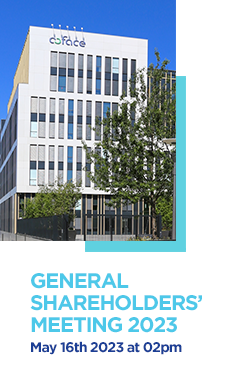

Belgium
Synthesis
major macro economic indicators
| 2020 | 2021 | 2022 | 2023 (e) | 2024 (f) | |
|---|---|---|---|---|---|
| GDP growth (%) | -5.4 | 6.9 | 3.0 | 1.4 | 1.3 |
| Inflation (yearly average, %) | 0.7 | 2.4 | 9.6 | 4.1 | 2.6 |
| Budget balance (% GDP) | -8.9 | -5.4 | -3.5 | -5.0 | -5.0 |
| Current account balance (% GDP) | 1.4 | 1.3 | -1.0 | -0.5 | -0.3 |
| Public debt (% GDP) | 112.0 | 108.0 | 104.4 | 107.6 | 107.9 |
(e): Estimate (f): Forecast
Last updated Economic indicators : February 2024
STRENGTHS
- Optimal trade-strategic location between the United Kingdom, Germany and France
- Ports of Antwerp (second-largest in Europe) and Zeebrugge
- Presence of European institutions, international organisations and global groups
- Well-trained workforce thanks to vocational education, multilingualism
WEAKNESSES
- Political and financial tensions between Flanders and Wallonia
- Complex institutional structure and multiple administrative levels
- Very dependent on the Western European economy: exports of goods and services = 86% of GDP, of which almost 60% goes to the rest of the EU
- Exports concentrated on intermediate products
- Heavy public debt
RISK ASSESSMENT
Belgian economy supported by resilient consumption
The Belgian economy has shown resilience in 2023 thanks to private consumption. The reason for this stronger consumption is the automatic price indexation of Belgian wages – originally a public scheme, but traditionally copied by most unions/employers, it has a time lag of several quarters – that has probably pushed hourly wages up by over 8% in 2023, after an already high 5.5% increase in 2022. Furthermore, household purchasing power in 2023 has been supported by tax reductions as the personal income brackets were indexed in January 2023 based on 2022 inflation figures. For 2024, real wages are expected to remain stable, with wage growth keeping pace with inflation, which should ease further. However, private residential investments are being affected by increased financing costs posed by higher interest rates. This should remain the case in 2024. Investments by companies should also remain subdued in 2023 and could even drag on growth over the winter before possibly staging a gradual recovery throughout 2024. On back of automatic wage increases, corporate labour costs have skyrocketed over recent years and are set to rise further. To support companies, the government has introduced measures to significantly reduce their social security contributions. They also profited from the reduction of the VAT for electricity and gas from 21% to 6%, which gave companies more room for maneuver. However, while for private households the lower VAT level will probably remain in place until the end of 2023, for companies it ended at the end of June 2023. The high wage burden has also an effect on foreign trade. Thanks to the relatively higher purchasing power of Belgians, their imports should remain robust, but the loss of price-competitiveness of Belgian products has resulted in lower original exports (40% of Belgian exports to the rest of the European Union are transit-oriented imports). This will also remain an issue in 2024. Minimal support should also come from public expenditures, which are set to grow only moderately and will be concentrated on local investment projects that are dated before the election in summer 2024. In the wake of very sluggish eurozone economic growth in conjunction with easing inflation, the ECB should go into “wait-and-see” mode after a sharp tightening phase between July 2022 and September 2023. However, interest rates are likely to remain at this high level during the first half of 2024 and probably even longer.
Persistent double deficit
The public deficit is expected to have once again increased in 2023. Although the temporary pandemic-related measures have been unwound and the support measures around the war in Ukraine have decreased, the financing costs for government debt increased noticeably compared to the low interest rate environment, the reduction of the VAT for electricity and gas is evident in the public accounts, public investments have risen (defence, regional infrastructure and local government investments). Furthermore, due to the automatic inflation indexation of public wages and general pensions, public wage costs have risen sharply. In 2024, the deficit should decrease only slightly. While the temporary energy and Ukraine-related measures will be eliminated, the costs of the aging population (higher pensions) will increase, and local government investments are expected to peak ahead of the election due in the summer of 2024. Public debt will therefore remain very high and its sustainability will be one of the main challenges. The European budgetary rules that were suspended in 2020 will apply again in 2024. Moreover, financing costs will remain much higher than in the previous years as the ECB is unwinding its asset portfolio that resulted from its quantitative easing policy of the last decade. The ECB already stopped the reinvestments of its APP-program in July 2023.
The current account should remain in deficit but improve in 2023 and 2024 due to better terms-of-trade conditions (mainly on the import side thanks to the lower – albeit durably high – energy bill) and an increase of the primary balance, which includes profits from investments abroad. However, given sluggish demand for Belgian products in the main export destinations (i.e., Germany, the Netherlands and France) combined with robust imports, the current account balance will remain in deficit.
Repetition of the Vivaldi coalition after the election in June 2024 possible
Prime Minister Alexander De Croo, a Flemish Liberal, leads a large-scale coalition with 87 out of 150 seats in the House of Representatives. The coalition is known as the “Vivaldi” coalition due to its four-group composition: socialists, liberals, environmentalists, and Christian Democrats. It includes seven parties: the French-speaking PS, with 19 seats and the Dutch-speaking socialists, Vooruit (with 9), the French-speaking Ecolo (13) and the Dutch-speaking environmentalists Groen (8), the French-speaking MR (14) and the Dutch-speaking liberals Open VLD (12), as well as the Flemish Christian Democrats, CD&V (12). The parties’ ideologies are not aligned, but the government has managed to hold on to power. One reason for this resistance is the fear of extremist parties coming to power after the far-right Flemish nationalists (VB) amassed its sharpest gain in votes during the last election in 2019.
Looking to the next election in June 2024, the overall direction of the next parliament is very difficult to predict as the already fragmented political landscape is drifting even further apart. Flanders is veering increasingly to the right (VB together with the Flemish conservatives were the clear frontrunners in spring 2023) while Wallonia is tending to the left (the PS is in the lead). What is almost certain is that after the election it will again take long time to build a coalition. The last time it took 494 days between the election and the swearing-in of the cabinet. If Belgian politics continues to adhere to its rule of keeping far-right parties isolated, then there could be a repetition of the Vivaldi-coalition. According to the current polls, the parties would have enough support. While the centre-parties are losing some share, the socialist party Vooruit should gain more votes.
Last updated: October 2023
Payment
Bank transfers (SEPA & SWIFT) and electronic payments are the most frequently used methods of payment for businesses.
Cheques are seldom used and only in certain sectors (e.g. transport, fruit and vegetable wholesale). As cheques no longer benefit from a guarantee from the issuing bank, the cheque issuer’s account needs to contain sufficient funds in order to be for the cheque to be cashed. Issuing a cheque with insufficient funds is a criminal offence.
Bills of exchange are no longer used for payment in Belgium, except in certain sectors and in international transactions.
Payment defaults are no longer recorded in the Moniteur belge (MB, Belgian Official Journal), but they can be consulted on the National Chamber of Bailiffs’ website, where data is available to banks and professional organisations.
Debt Collection
Amicable phase
There are no special provisions for out-of-court debt recoveries between businesses. Creditors should attempt to gain payment from debtors by sending written reminders. Before beginning legal action against a debtor company, it is often worthwhile asking a lawyer to check the database of seizures.
Legal proceedings
Judgments are normally delivered within 30 days after closure of the hearings. A judgment is rendered by default in cases where debtors are neither present nor represented during the proceedings.
Fast track proceedings
This procedure is rarely used in business-to-business cases, and cannot be implemented when the debt is disputed. A 2016 law implemented a new set of procedural rules, creating an out-of-court administrative procedure for non-disputed debts. When an order of payment has been issued, the debtor has a month to pay the amount. If the debtor refuses, the creditor can request a bailiff to issue a writ of execution. Moreover, under the new rules, lodging an appeal against a judgment will no longer suspend the enforceability of this judgment. Consequently, even if the debtor starts appeal proceedings, the creditor will be able to pursue the recovery of the debt.
Retention of title clause
This is a contractual provision stipulating that the seller retains title of goods until receipt of full payment from the buyer. Unpaid creditors can make claims on goods in the debtor’s possession. It therefore follows that the retention of title clause is enforceable in all situations where creditors bear losses arising from insolvencies, whatever the nature of the underlying contract. When goods sold under retention of title are converted into a claim (after a sale), the seller-owner’s rights referring to this claim (the selling price) are known as real subrogation.
Ordinary proceedings before the commercial court
All disputes between companies can be tried by the Commercial Court in Belgium. In cases of cross-border claims using European legislation, a European execution for payment proceedings can be enabled. Claimants also have recourse to European small claims proceedings.
Summon on the merits
The bailiff assigns the debtor a court date for the introduction of the case. If discussions do not take place, judgement will follow within four to six weeks. If there are discussions pending, parties need to put their intentions in written conclusions. After judgement, there is a possibility to appeal – if no appeal is filed, the execution will follow through the bailiff.
Attachment procedure
This judicial proceeding is conducted for the benefit of only one party (ex parte). There are three essential conditions to proceed with an attachment:
- urgency of the measure;
- prior authorisation of the judge is required to lay a conservatory attachment;
- the debt must be certain, collectable and liquid.
A debtor may request the cancellation of the attachment if it has been unjustly imposed. However, once an attachment has been imposed, it remains valid for a period of three years. Subsequently, a conservatory attachment may be transformed into an execution order.
Enforcement of a Legal Decision
A judgment becomes enforceable once all venues of have been exhausted. If the debtor refuses to execute payment, a bailiff can attach the debtor’s assets or obtain payment through a third party (Direct Action).
Foreign awards can be recognised and enforced in Belgium, provided that various criteria are met. The outcome will vary depending on whether the award is rendered in an EU country (in which case it will benefit from particularly advantageous enforcement conditions), or a non-EU country (for which normal exequatur procedures are applied).
Insolvency Proceedings
Bankruptcy proceedings
Debtors can file for bankruptcy when they have ceased making payments for some time, or when the creditor’s confidence has been lost. If bankruptcy is granted, creditors must register their claims within the time prescribed in the court’s insolvency declaration. Failure to do so on the part of a creditor will result in the cancellation of their priority rights. The court then appoints a trustee, or official receiver, to verify the claims. The retention of title clause can be cited by the creditor, in order to claim his property.
Since 2017, submissions of claims where bankruptcy procedures are involved must be made electronically, via the Central Solvency Register (www.regsol.be), which records all bankruptcies over the last 30 years.
Judicial restructuring process
The judicial restructuring process (reorganisation judiciaire), designed to reorganise a company’s debts with its creditors, can be granted by the court upon request of any debtor facing financial difficulties that threaten its continued business in the short- or medium-term. The debtor makes a reasoned application to the Registry of the Commercial Court in order to be granted an extended period to pay the debt. This extended period is normally set at six months, during which the debtor must propose a reorganisation plan to all of its creditors.
Outstanding creditors (those whose claims arose before the commencement of the extended period) cannot begin any execution procedure for the sale of real or personal property of the debtor, but can request enforcement of their retention of title clause. Nevertheless, the extended period does not prevent the debtor from making voluntary payments to any the outstanding creditors. In addition, the extended period does not benefit co-debtors and guarantors, who are still required to meet their commitments.







